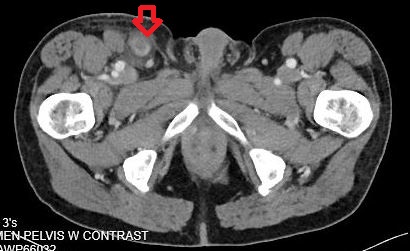A 62 y.o. male from St. Louis presents with fever, hypoxic respiratory failure and tender inguinal nodes.
Is there a unifying diagnosis?
Our patient had tularemia or “rabbit fever”, blood cultures were positive for Francisella tularensis. He lives in south St. Louis county and was scraping a dead rabbit from his driveway and presumably inhaled aerosolized bacteria. Ten days later he presented with fever and hypoxia. He had painful nodes in the R groin and they were biopsied. In addition to rabbits, voles and feral hogs in Texas have been reported as reservoirs of disease.
Tularemia is also transmitted by tick bites and deer fly bites. The disease is named after Tulare county in California where the disease was first discovered in 1911. Although generally rare, the disease is present in sporatic outbreaks in Finland and Sweden with 4,830 cases reported in Sweden from 1984-2012.
Cases in the US in 2016
Types of tularemia include:
Ulceroglandular- the most common type where an ulcer appears at the site of the infection.
Oculoglandular- when the bacteria enter through the eye
Oropharyngeal- from eating contaminated food where the bacteria causes mouth ulcers
Pneumonic- results either from breathing the organism or bacteremia from ulceroglandular with dissemination.
Treatment is usually with gentamycin although doxycycline can also be used. Interest in tularemia increased in modern times since it is a potential biologic weapon with only 10 to 50 bacteria being sufficient to infect a person.
Ulceroglandular tularemia
Desvars A, Furberg M, Hjertquist M, et al. Epidemiology and ecology of tularemia in Sweden. 1984-2012. 2015 emerg Infect Dis 21(1) 32-39.
Feldman K, Enscore R, Lathrop S., et al. An outbreak of primary pneumonic tularemia on Martha’s Vineyard.2001. NEJM 345(22): 1601-6.
Dennis D, Inglesby T, Henderson D, et al. Tularemia as a biological weapon: medical and public health management. 2001 JAMA 285(21)2763-73.
Random rabbit facts:
In the wild rabbits don’t eat carrots or any root vegetables.
Their warrens can extend 10 feet underground.
Rabbits can see nearly 360 degrees.
Ovulation is triggered by intercourse and after a thirty day gestation 4-12 kits are born.




